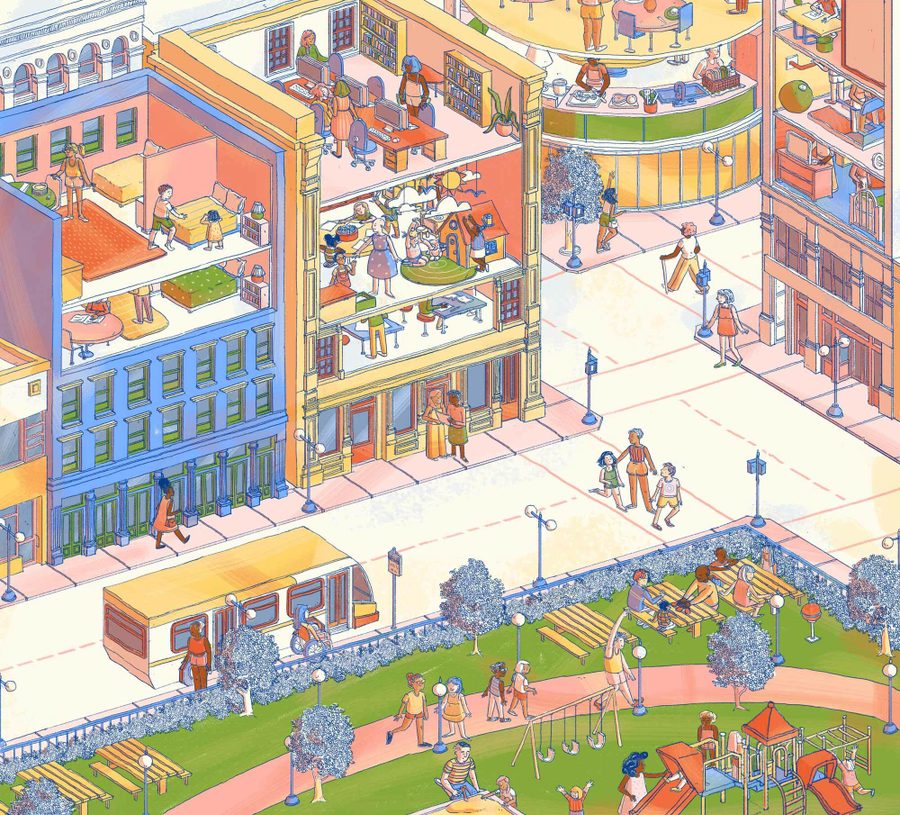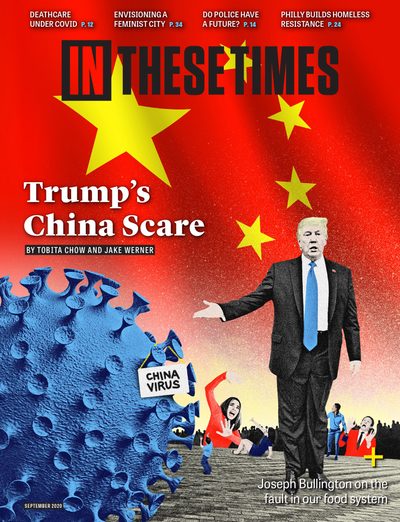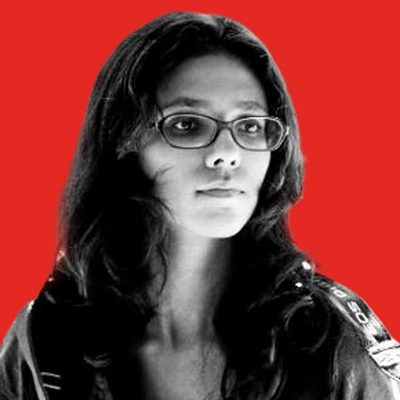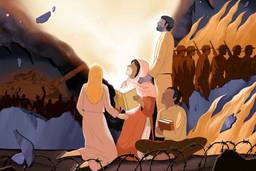What Would a Feminist City Look Like?
New York’s City Hall encampment provides a model for creating care-centered, inclusive spaces.
Apoorva Tadepalli

“A woman’s place is in the city,” wrote Gerda Wekerle, an environmental studies professor at York University in Toronto, in the early 1980s. The city has a singular ability, she argued, to support the existence of women in the domestic as well as the public and economic spheres of life. Culturally and logistically, the city offers freedom and possibility — and the essential public services — that women uniquely need. More than 30 years later, Leslie Kern (Wekerle advised Kern on her Ph.D. dissertation) began writing a book titled Feminist City: Claiming Space in a Man-made World, released in the United States in July.
In the introduction, Kern acknowledges the history of idealizing the city as an escape for women confined to the home with the undue burden of domestic labor. The 19th-century concept of the flaneur, strolling through the streets leisurely and inhabiting the public square, became the picture of modern urban life. In much of literature, the flaneur figure is a man, though recent works — such as Lauren Elkin’s 2016 Flâneuse: Women Walk the City in Paris, New York, Tokyo, Venice and London— have attempted to reclaim flânerie to describe the unique freedom cities offer women. As Elkin writes, the city was a place for a woman “to seek fame and fortune or anonymity … to liberate herself from oppression … to declare her independence.” Kern acknowledges how cities do offer women choices “unheard of in small towns and rural communities. Opportunities for work. Breaking free of parochial gender norms. … Taking up social and political causes. … Participating in arts, culture and media.” Nevertheless, Kern argues, the city is also a site of oppression.
Kern examines the challenges of moving through urban space as a woman from various perspectives — as a pregnant woman and mother, a protester, a woman in the company of other women. There is infrastructural exclusion through the public transit stations and schedules designed for the non-disabled nine-to-five commuter who is not pregnant and does not make stops at the grocery store or daycare along the way. Women also incur the pink tax, relying more than men on public transportation and spending more per month on it, especially if they are primary caregivers. And then there’s psychological exclusion: Women must factor the fear of being attacked into their daily routine as they move through public spaces, which takes a mental toll (and perhaps an economic one, for the safety of taking a taxi or living in a building with security).
The city, in other words, is the center of capitalism and material inequality, and is designed for a particular type of man — white and cisgender, middle-to-upper class, non-disabled. “Built environments reflect the societies that construct them,” Kern writes. “Bulletproof vests to kitchen counters, smartphones to office temperatures, [are] set to standards determined by men’s bodies and needs.” When women exist in the city, they do so not just because of what the city offers, but in spite of it. So what, Kern asks, would a “feminist city” look like?
Fundamentally, Kern is trying to envision a more inclusive city that considers the physical and cultural needs of its most marginalized members. To sympathize with those who experience long-term vulnerability on city streets, such as trans and disabled people, Kern draws on her experiences of pregnancy and motherhood, describing the barriers to access she noticed on the streets, on transit, at protests, at night, in public restrooms. At times, her self-interrogation about her whiteness becomes uncomfortable. Her observations about how cities inspire fear in women, and how she herself has been socialized “not to trust public space,” sometimes betray her own internalized biases as a cis white woman — such as when she wonders, even if it meant creating a more inclusive and free city, “Will I reach out to offer money or food to someone experiencing homelessness? … Send my kid to a school in a racially diverse neighborhood?” These may be earnest questions, but Kern’s doubt undermines her reliability as a narrator and as a geographer concerned with victims of material oppression.
Some of Kern’s complaints about city life are aspects of an individualist culture that values personal space, which itself is a privilege. Her fear of eating alone in restaurants in Chicago and Atlanta, walking by them multiple times and peering through the window in preparation to enter alone, for example, is uncomfortable. Though she doesn’t clarify what or whom exactly she fears, one can imagine the interrupter as someone “sketchy,” which often means someone who looks poor or is not white.
While many of Kern’s observations and criticisms are bound up in her individual experiences, it’s useful to note that a real feminist city — and much of Kern’s descriptions of one — is not, by definition, one for women in power. Rather, it’s an equitable and economically just city, one where work is better distributed and public services are more readily accessible.
Kern gives examples from Newark, N.J., in the mid-2000s, where Black mothers engaged in “homemaking” practices that extended outside their individual homes, practicing collective mothering and bringing domesticity into the public sphere, revitalizing cultural centers and spaces that could nurture community. In 1999, Vienna’s transit system surveyed women on their accessibility requirements and subsequently “[redesigned] areas to facilitate pedestrian mobility” and created “housing developments of the sort imagined by feminist designers,” with on-site child care and easy access to health services and transit. In Namibia, the Shack Dwellers Federation offers “shared security of tenure and housing to their members, thereby improving women’s opportunities to get better public services and generate income.” Surely, all of these ventures would be at home in any equitable, human-friendly city.
There is, as Kern writes, no fixed “blueprint” for the feminist city — it’s a work of active and constant creation. But Kern doesn’t explore these solution-oriented case studies with the same vigor as she does the various problems women face in public spaces. One example that may have been of interest in Kern’s study, had she been writing now, is the #OccupyCityHall encampment in New York (later renamed Abolition Park), created in response to the killing of George Floyd.
The ideology of protest is easy to get on board with; sometimes more interesting is the logistics—how people sustain themselves, what details make people feel part of a nebulous collective sometimes well defined and sometimes not. The logistics of Abolition Park, formed June 23 to convince New York City Council to defund the city police department by $1 billion, transitioned into a broader long-standing message after City Hall passed its (demotivating) budget June 30. Until July 22, when riot police conducted a pre-dawn raid and evicted the residents, hundreds of people had camped out in City Hall Park for a month, with tents, bicycles, food and signs surrounding the Brooklyn Bridge subway station, which had been cordoned off by the protesters.
Even if the camp lacked a clear message about the next steps toward abolition, I could see — when I stayed there in late June and early July — a clear understanding of how to care for other people and be part of a community trying to physically organize itself.
In some sense, the squatters at City Hall experienced vulnerabilities similar to the ones Kern describes women facing, such as safety needs and an excess burden of domestic work. “A feminist city must be care-centered, not because women should remain largely responsible for care work but because the city has the potential to spread care more evenly,” Kern writes. The City Hall squatters were a diverse group. Many were minorities and people of color, extremely attuned to vulnerabilities and the collective work required to support the camp. Several were unhoused New Yorkers. Volunteers split up the “domestic” work, such as food provision and laundry, ensuring meals were ordered and people had bedding. Designated escorts chaperoned groups to bathrooms and showers in a studio nearby, making sure everyone was safe from harassment and arrest. In the spirit of non-discrimination, and of resisting the framework of property rights, the camp fund offered to replace stolen items (like phones and computers) rather than expel those who stole. Sleeping in public is a significant act of surrender and risk, even if many at City Hall were doing it by choice, and groups kept watch at night while others slept. Daily collective cleanups were organized. In the event of any harassment or assault within the camp, a committee of women assembled to counsel and protect victims while agreeing to expel perpetrators only once they had acquired the necessary resources, like money, bedding and food. I witnessed no children in the encampment, but I find it easy to believe child care would have become a serious collective priority if there were.
All these arrangements and gestures, small as they may seem individually, worked toward something quite remarkable: a wholly new conception of what a city could look like, if the needs of the most vulnerable were placed at its forefront. When we occupy a public place, we are vulnerable: We lie down, we leave our belongings around, we are in various states of dress and cleanliness. The logistical arrangements in this encampment, perhaps against all odds, slowly inspired and emboldened New Yorkers to participate in a collective project of care, spreading the work of maintaining a living space across many people and making the safety of these citizens a top priority. I like to think this is what a feminist city might look like, where food, chores, safety and cleanliness become evenly distributed priorities, where the well-being of everyone — especially the most marginalized — becomes a collective responsibility. As with Occupy Wall Street, this movement generated skepticism. Wherever the coherence of its ideological message fell short, we might simply appreciate the active and continuous process of placemaking, of “homemaking,” that it exhibited.
“Relying heavily on the state for radical transformation is a waste of time,” Kern writes. It’s true: the city’s external environment, design and policy can only do so much in making it a home. The rest, perhaps, is a matter of our own imagination, of constant creation.
Apoorva Tadepalli is a freelance writer from Bombay. Her work has appeared in The Point, Guernica, Electric Literature and elsewhere.







